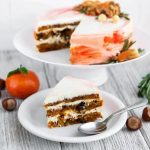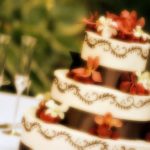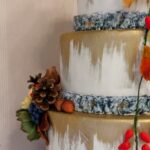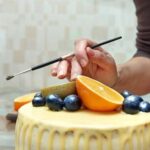Are you looking for a creative way to add a personal touch to your cakes? Look no further. In this article, we will explore the world of edible paint for cake decorating and show you how to make your own at home. From the basics of edible paint ingredients to tips on achieving the perfect consistency, we’ve got you covered. Get ready to unleash your inner artist and take your cake decorating skills to the next level.
When it comes to cake decorating, using edible paint can be a game-changer. Whether you’re a seasoned baker or just starting out, edible paint offers endless possibilities for adding color and flair to your creations. And the best part? You can easily make it yourself using simple ingredients that you probably already have in your kitchen.
In this comprehensive guide, we will walk you through everything you need to know about making and using edible paint for cake decorating. From choosing the right food coloring options to creative ways to use edible paint, you’ll soon be on your way to creating stunning and unique designs that are sure to impress. So let’s dive in and explore the exciting world of edible paint for cake decorating.
The Basics of Edible Paint Ingredients
When it comes to cake decorating, edible paint is a versatile and fun way to add unique designs and colors to your creations. The key to making edible paint for cake decorating lies in using the right ingredients. The most common ingredients for edible paint include food coloring, liquid extracts, and alcohol.
Food coloring is the primary ingredient in edible paint and comes in various forms such as gel, powder, or liquid. Gel food coloring is preferred for creating edible paint due to its concentrated pigment, which provides vibrant colors without affecting the consistency of the paint.
Liquid extracts such as vanilla or almond extract are often used to dilute the food coloring and add flavor to the paint. Additionally, alcohol like vodka or clear flavored extracts are used as a medium to dissolve the food coloring and help it dry quickly when painting on cakes.
To make your own edible paint at home, you will need these basic ingredients as well as some small containers for mixing and storing your homemade paints. The process is simple and allows for endless color combinations and customizations based on your preference.
Furthermore, when creating edible paint for cake decorating, it’s important to consider the use of natural food coloring options if you prefer to avoid artificial dyes. Natural alternatives such as beet juice, turmeric, matcha powder, and freeze-dried fruit powders can be used to achieve a wide range of hues without compromising on taste or safety.
| Edible Paint Ingredient | Role |
|---|---|
| Food Coloring (Gel) | Main pigment for vibrant colors |
| Liquid Extracts (e.g. vanilla) | Dilution agent and flavor addition |
| Alcohol (e.g. vodka) | Dissolves food coloring and aids quick drying |
Step-by-Step Guide on Making Edible Paint at Home
Making edible paint for cake decorating at home is a fun and creative way to add color and personality to your cakes. With just a few simple ingredients, you can create beautiful and vibrant edible paint that is safe to use on your baked creations. In this section, we will provide a step-by-step guide on how to make edible paint for cake decorating in the comfort of your own kitchen.
To make edible paint for cake decorating, you will need a few key ingredients, including confectioner’s sugar, clear alcohol (such as vodka or lemon extract), and gel food coloring. The confectioner’s sugar will serve as the base of the paint, while the clear alcohol will act as a thinning agent to achieve the desired consistency.
Gel food coloring is used to add color to the paint, and it is important to use gel colors specifically formulated for use in food.
First, start by mixing confectioner’s sugar with a small amount of clear alcohol in a small bowl. Use a 1:1 ratio of confectioner’s sugar to clear alcohol as a starting point, and adjust as needed to achieve your desired consistency. Mix the two ingredients together until smooth, adding more alcohol if necessary to thin out the mixture.
Once you have achieved the desired consistency with the confectioner’s sugar and clear alcohol mixture, you can then add gel food coloring to create your desired colors. Start with a small amount of gel food coloring and mix it into the sugar-alcohol mixture, adding more until you reach your desired shade.
Be sure to mix thoroughly to ensure that the color is evenly distributed throughout the edible paint. And there you have it – homemade edible paint for cake decorating that is ready to be used on your delicious creations.
| Ingredients | Ratios |
|---|---|
| Confectioner’s Sugar | 1:1 with clear alcohol |
| Clear Alcohol (vodka or lemon extract) | To achieve desired consistency |
| Gel Food Coloring | To achieve desired colors |
Tips and Tricks for Achieving the Perfect Consistency
When it comes to using edible paint for cake decorating, achieving the perfect consistency is key to creating beautiful and flawless designs on your cakes. Here are some tips and tricks to help you achieve the perfect consistency for your edible paint:
1. Use the Right Ratio: The ratio of liquid to color is important when making edible paint. Start with a small amount of food coloring and gradually add more as needed until you reach the desired shade. It’s best to start with a 2:1 ratio of food coloring to liquid (such as clear alcohol or lemon extract) and adjust as necessary.
2. Mix Thoroughly: To ensure that your edible paint has a smooth and consistent texture, be sure to mix it thoroughly. Use a small whisk or stirring stick to blend the ingredients together until there are no lumps or clumps in the mixture.
3. Test for Consistency: Before applying your edible paint to your cake, test the consistency on a piece of wax paper or parchment paper. This will give you an idea of how the paint will behave and allow you to make any adjustments if necessary.
Remember, achieving the perfect consistency for your edible paint may take some trial and error, so don’t get discouraged if it doesn’t turn out exactly right the first time. With practice and patience, you’ll be able to create stunning designs on your cakes using homemade edible paint.
Now that you have learned some tips and tricks for achieving the perfect consistency for your edible paint, it’s time to put them into practice. Experiment with different colors and techniques to see what works best for your cake decorating projects. With a little creativity and practice, you’ll be able to master the art of using edible paint to bring your cake designs to life.
The Best Food Coloring Options for Edible Paint
When it comes to creating edible paint for cake decorating, choosing the right food coloring is essential for achieving vibrant and beautiful colors. There are several options available in the market, each with their own pros and cons. Let’s explore some of the best food coloring options for making edible paint at home.
Gel Food Coloring
Gel food coloring is a popular choice among cake decorators due to its intense pigmentation and vibrant colors. It has a thicker consistency compared to liquid food coloring, making it ideal for creating edible paint with a rich and bold finish. Gel food coloring is available in a wide range of colors, allowing you to mix and create custom shades for your cake decorating projects.
Powdered Food Coloring
Powdered food coloring is another excellent option for making edible paint. It is highly concentrated, which means you only need a small amount to achieve the desired color intensity. Powdered food coloring is perfect for creating pastel shades and subtle hues. Additionally, it dissolves easily in liquids, making it effortless to incorporate into your homemade edible paint.
Natural Food Coloring
For those who prefer using natural ingredients in their edible paint, natural food coloring is an excellent choice. Made from fruits, vegetables, and spices, natural food coloring offers a wide array of colors without the use of artificial additives. Options such as beet powder, turmeric, and matcha powder can be used to create unique and earthy tones for your cake decorating projects.
Ultimately, the best food coloring option for your edible paint will depend on your desired color intensity, consistency preferences, and any dietary restrictions you may have. Experimenting with different types of food coloring can help you discover what works best for your specific cake decorating needs while maintaining the safety and quality of your creations.
Creative Ways to Use Edible Paint in Cake Decorating
So, you’ve mastered the art of making edible paint for cake decorating. Now, it’s time to explore the creative ways you can use this versatile medium to take your cake decorating skills to the next level. Whether you’re a beginner or an experienced baker, there are endless possibilities when it comes to using edible paint to add unique and beautiful designs to your cakes.
Here are some creative ways to use edible paint in cake decorating:
1. Watercolor Effect: Use a soft brush and diluted edible paint to create a beautiful watercolor effect on your cakes. This technique allows you to blend different colors seamlessly and create stunning, artistic designs.
2. Metallic Accents: Add a touch of glamour to your cakes by using metallic edible paint. Gold, silver, and copper hues can be used to embellish intricate details or create eye-catching accents on your cakes.
3. Stenciling: Create intricate patterns and designs on your cakes by using stencils with edible paint. This method allows for precise and detailed decorations that will impress any recipient.
4. Hand-painted Designs: Channel your inner artist by hand-painting intricate designs directly onto your cakes using edible paint. From flowers and landscapes to abstract patterns, the possibilities are endless when it comes to hand-painted cake decorations.
5. Marbling: Create a marbled effect on your cakes by swirling different colors of edible paint together. This technique adds depth and visual interest to your cakes and is sure to leave a lasting impression on anyone who sees or tastes them.
Now that you have some creative ideas for using edible paint in cake decorating, it’s time to unleash your creativity and start experimenting with different techniques and designs.
How to Store Edible Paint for Future Use
Storing edible paint for future use is essential in maintaining the quality and safety of the paint. Whether you have leftover paint from a cake decorating project or you want to prepare a batch in advance, proper storage is key to preserving its freshness and preventing any bacterial growth.
Once you have made your edible paint using the desired ingredients and achieved the perfect consistency, it’s important to transfer it to a suitable container for storage. Airtight containers such as small glass jars or food-safe squeeze bottles are ideal for keeping edible paint fresh. Make sure to label the containers with the date of preparation and the type of colors used to easily identify them in the future.
When storing homemade edible paint, it is crucial to keep it in a cool, dry place away from direct sunlight and heat sources. Extreme temperatures can affect the quality of the paint, leading to changes in texture and color. Additionally, exposure to light can cause certain food coloring options to fade over time. Therefore, a pantry or kitchen cabinet away from appliances is an ideal location for storing edible paint.
By following these simple storage guidelines, you can prolong the shelf life of your homemade edible paint and ensure that it remains safe and ready for use in future cake decorating projects. Properly stored edible paint can last for several weeks, allowing you to have a variety of colors on hand whenever inspiration strikes.
Overall, understanding how to store edible paint for future use is essential in maximizing its longevity and maintaining its vibrant colors. Following these storage tips will help you preserve your homemade edible paint so that it can be enjoyed in your cake decorating endeavors for weeks to come.
Safety and Health Considerations When Using Edible Paint
When using edible paint for cake decorating, it is important to consider safety and health precautions to ensure that the final product is not only visually appealing but also safe to consume. This section will discuss the key considerations when working with edible paint, including potential allergens, food safety guidelines, and general best practices.
Ingredients and Allergens
It is crucial to carefully review the ingredients of the edible paint to identify any potential allergens. Common allergens in edible paint may include certain food coloring agents, preservatives, or flavorings. Always disclose all ingredients used in your edible paint to anyone consuming the decorated cake, especially if they have known allergies.
Food Safety Guidelines
When making edible paint for cake decorating, it is essential to follow strict food safety guidelines. Use clean utensils and containers when preparing the paint, and ensure that all ingredients are fresh and free from contamination. Additionally, be mindful of cross-contamination when working with multiple colors of edible paint.
Best Practices for Application
When using edible paint on cakes or other baked goods, it is important to use a clean brush or applicator for each color to prevent any transfer of bacteria or other contaminants. Properly store any leftover paint in airtight containers in the refrigerator to maintain its freshness and prevent spoilage.
Conclusion
In conclusion, learning how to make edible paint for cake decorating opens up a world of possibilities for creating beautiful and unique designs on your baked creations. The process of making edible paint at home is simple and allows you to have full control over the ingredients used, ensuring a safe and healthy option for decorating your cakes.
Whether you are a professional baker or just enjoy baking as a hobby, edible paint can add an extra touch of creativity and personalization to your cakes.
The versatility of edible paint allows for endless creativity in cake decorating. Not only can you create intricate designs and patterns with the use of brushes and stencils, but you can also explore different techniques such as watercolor effects and ombre shading. The ability to mix and blend different colors gives you complete freedom to bring your cake decorating ideas to life.
With proper storage techniques, homemade edible paint can be kept for future use, making it convenient for when inspiration strikes or when you need to quickly add a decorative touch to a cake. By following safety and health considerations when using edible paint, you can ensure that your creations not only look stunning but are also safe for consumption.
Overall, mastering the art of making and using edible paint opens up new avenues for expression in cake decorating, allowing you to elevate your baking skills to the next level.

Welcome to my blog about home and family. This blog is a place where I will share my thoughts, ideas, and experiences related to these important topics. I am a stay-at-home mom with two young children. I hope you enjoy reading it! and may find some helpful tips and ideas that will make your home and family life even better!





